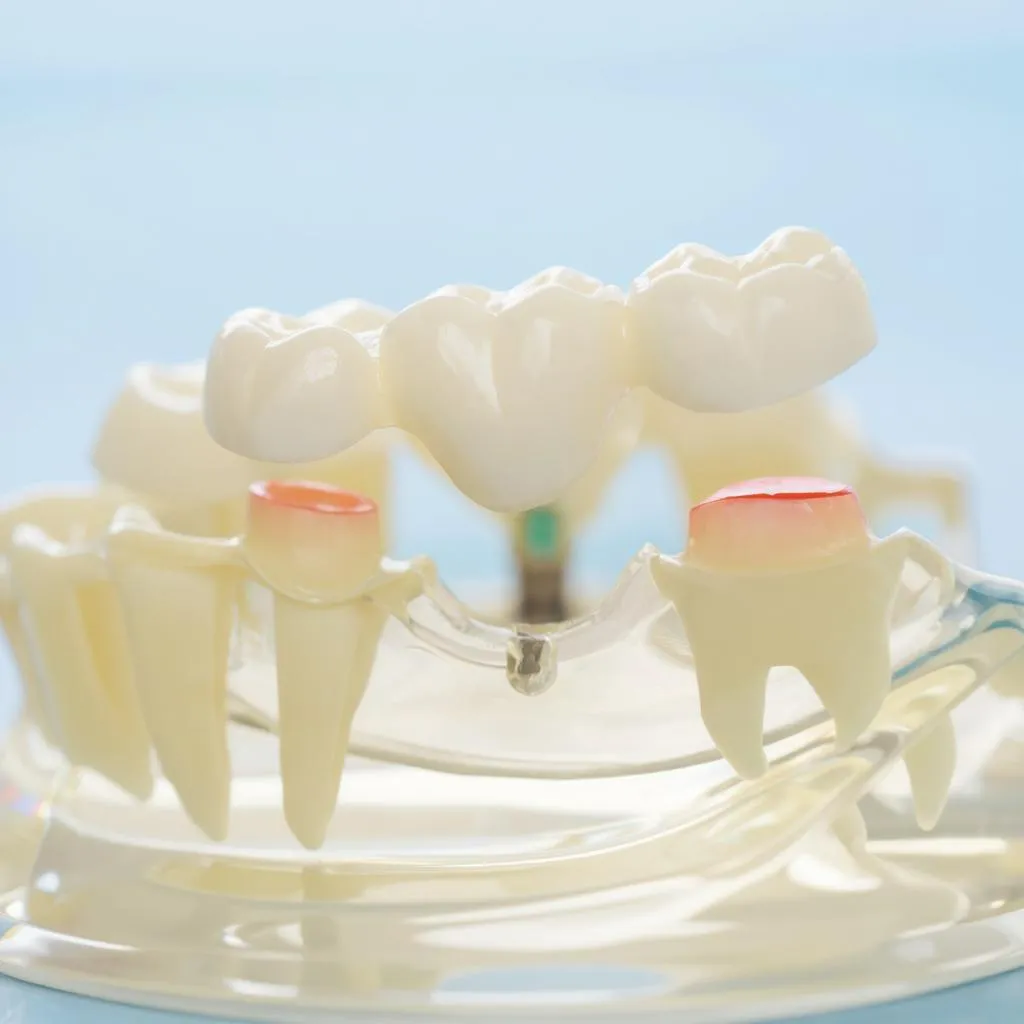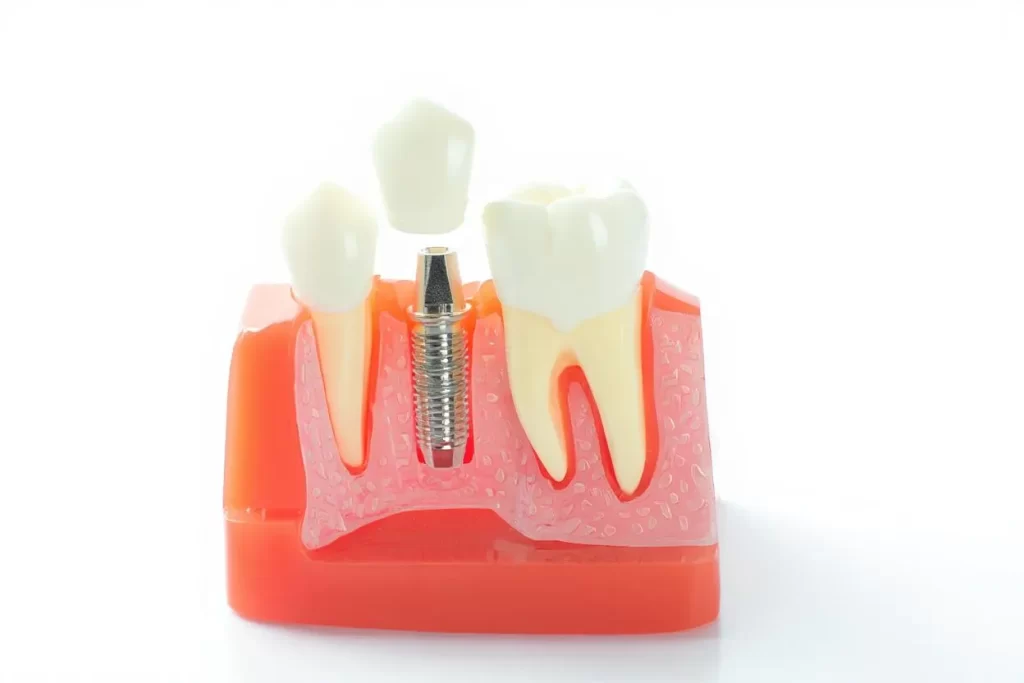Dental gap filling: options, pros and cons, and how to choose what’s right for you

Missing teeth are more than a cosmetic concern. Even a small space can change how you bite, make certain words harder to say, and nudge neighbouring teeth out of line. The upside is that modern dentistry offers several dependable ways to close gaps, from quick composite bonding to long-term dental implants. The best choice is the option that suits your biology, your bite and your goals.
Why filling a dental gap matters
- Function
Teeth tend to drift into empty spaces, which can disrupt your bite and make cleaning more challenging. For a plain-English primer on causes and treatment pathways, the Victorian Government’s guide to gapped teeth (diastema) is a helpful starting point. - Gum and bone support
Without a tooth root, the bone in that area can shrink over time. Planning a replacement that supports the tissues helps protect facial shape and future treatment choices. - Confidence
Closing a gap can improve symmetry and give the lips better support. It is a practical change that happens to look good, too.
The main ways to fill a gap
1) Composite bonding
Best for
Small spaces between front teeth, minor chips and those little black triangles near the gums.
How it works
A tooth-coloured resin is layered and sculpted directly on the tooth, then cured and polished so it blends with the enamel.
Pros
Conservative, usually completed in one visit, budget-friendly, and reversible.
Considerations
Resin can pick up stains or micro-chips over time and may need a tidy-up visit every few years.
If you are considering subtle reshaping or closing small gaps as part of a broader smile refresh, the clinic’s page on cosmetic dentistry outlines conservative options that keep natural tooth structure front and centre.
2) Porcelain veneers
Best for
Closing moderate front-tooth gaps while refining colour, shape and alignment.
How it works
A custom porcelain shell bonds to the front of the tooth. Minimal enamel reshaping may be required.
Pros
Excellent colour stability, realistic translucency and tailored proportions that follow your smile line.
Considerations
A small, permanent enamel change is typical. Night-time protection is wise if you grind.
For planning, materials and real-world outcomes, explore the practice’s overview of porcelain veneers.
3) Dental crowns
Best for
Teeth that already need strengthening because of cracks, large fillings or heavy wear, where closing a space can be combined with reinforcement.
How it works
The tooth is reshaped and covered by a full-coverage crown in porcelain or zirconia.
Pros
Restores strength and appearance, with the option to adjust shape to help close spaces and balance the bite.
Considerations
More tooth preparation than veneers, so generally chosen when the tooth needs a crown anyway.
If your tooth is structurally compromised, the clinic explains when a dental crown is the sensible choice.
4) Dental bridge
Best for
Replacing one or more missing teeth when you prefer a non-surgical route or an implant is not suitable.
How it works
A porcelain bridge fills the space and anchors to teeth or implants on either side. Adhesive designs use a thin wing bonded behind a neighbouring tooth, while traditional bridges cap the supporting teeth.

Pros
Natural appearance, no surgery, and you regain function quickly. Adhesive versions can be quite conservative.
Considerations
Traditional bridges require reshaping neighbouring teeth. Adhesive designs rely on the right bite and enamel quality. For an independent overview, Healthdirect’s guide to dental bridges covers designs, suitability and care.
5) Dental implants
Best for
Long-term, stand-alone replacements are considered when bone volume is suitable or can be improved.
How it works
A small titanium post is placed in the jaw to act as a root, then a custom crown is attached after healing. Two or more implants can support a bridge for several missing teeth.

Pros
Does not involve neighbouring teeth, helps maintain bone through functional loading, and restores confident chewing.
Considerations
Requires surgery and healing time. Suitability depends on general health, habits and bone levels. For an evidence-based patient view, see the Australian Dental Association’s overview of dental implants.
If you are weighing up a single missing tooth or several, the clinic’s page on dental implants walks through timelines, steps and expected results.
6) Partial dentures
Best for
Multiple gaps, short timelines or when you want a cost-effective solution that can adapt over time.
How it works
A custom acrylic or cobalt-chrome framework carries replacement teeth and clips around existing teeth for support.
Pros
Non-invasive, adjustable if your dental situation changes, and often the most budget-friendly starting point.
Considerations
Removable, so it needs daily cleaning and occasional relines. The Better Health Channel’s advice on caring for dentures covers hygiene, relines and wear.
Quick comparison at a glance
| Option | Best for | Invasiveness | Typical longevity | Reversible | Notes |
| Composite bonding | Small gaps and edge repairs | Minimal | 3 to 7 years | Yes | Maintenance polish may be needed |
| Porcelain veneers | Aesthetic closure of front gaps | Low to moderate | 10+ years | No | Strong colour stability |
| Dental crowns | Weak or cracked teeth needing strength | Moderate | 10 to 15+ years | No | Combines reinforcement with space closure |
| Dental bridge | One or more missing teeth | Moderate | 7 to 15+ years | No | Adhesive designs are conservative |
| Dental implant | Long-term, stand-alone replacement | Surgical | 15+ years | No | Helps maintain bone volume |
| Partial denture | Multiple gaps, flexible plan | None | 5 to 10+ years | Yes | Removable and adjustable |
How to decide: clinical and lifestyle factors
- Gap size and position
Front teeth are highly visible and often call for the most aesthetic approach. Back teeth carry more load, so strength leads the decision. - Condition of neighbouring teeth
If the adjacent teeth are pristine, an implant or adhesive bridge preserves them. If they are heavily filled, a traditional bridge or crown may be more efficient. - Bone and gum levels
Adequate support helps both the look and the longevity of the result. Your clinician may recommend grafting techniques where volume is lacking. - Bite forces and habits
Grinding and clenching raise the stakes for material choice and design. A night guard can be a smart insurance policy. - Timeframe and budget
Bonding or an adhesive bridge can be quick. Implants take longer to complete but offer strong long-term value. Many plans can be staged so you can move forward at a comfortable pace. - Lifestyle factors
Nicotine use is linked with slower healing and gum problems around restorations. For risks and practical strategies, the Better Health Channel outlines smoking and oral health.
The treatment journey
- Comprehensive assessment
Photos, X-rays and, where appropriate, 3D scans map the bite, bone and soft tissues. You will talk through priorities, risks and likely outcomes for each option. - Smile planning
For front teeth, mock-ups or digital previews help confirm tooth proportions, edges and speech sounds before anything is finalised. - Trial phase, where needed
- Provisional veneers let you test drive shape and length
- Temporary solutions keep appearances while implants heal
- Bridge and denture try-ins confirm fit and comfort before finishing
- Definitive treatment
Teeth are prepared only as required, digital scans are taken, and your custom restoration is made. Implant crowns are fitted once the implant has integrated. - Review and maintenance
Bites settle with use. A follow-up adjusts the fine points, then you move into routine care.
Care and maintenance
- Brush twice daily with a soft brush and clean between teeth with floss threaders or interdental brushes where bridges or implants are present
- Book regular hygiene visits to keep gums healthy around margins and fixtures
- Use a night guard if you clench or grind
- Treat very hard or sticky foods with caution, particularly if you have a bonding or an adhesive bridge
- Report chips, looseness or tenderness early so small fixes stay small
Final thoughts
Filling a dental gap protects how your teeth, gums and jaw work together and can lift the look of your smile at the same time. Composite bonding offers quick, conservative refinements. Veneers and crowns combine beauty with structure. Bridges restore function without surgery, while implants provide durable, stand-alone replacements that feel natural once settled. There isn’t a single best option for everyone; the right choice balances appearance, strength, maintenance and cost in a way that fits your everyday life.
Ready for tailored advice
If you’d like a clear recommendation based on your bite, bone and lifestyle, book a comprehensive consultation via our clinic’s contact page, and the team will map out timelines, materials and costs so you can choose with confidence.
